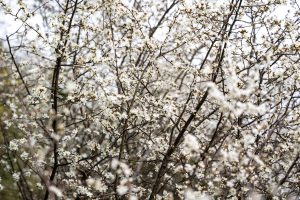Large Birds & Live Mealworms - Managing Supply & Demand
For anyone feeding the birds in their garden, there are few things more rewarding than putting out live mealworms in the breeding season. The spectacle of adult birds taking the mealworms to their nest for the young, then feeding the fledgelings a few weeks later, is simply brilliant. It’s also highly rewarding because it’s done in the knowledge that feeding live mealworms at this time of year increases breeding success for a host of different garden bird species.
However, a question we’re often asked by our customers is:
The main issue as we see it, is that most people are keen to feed birds such as Robin, House Sparrow and Blackbird with live mealworms – with all of these species readily taking them – but larger species, such as Magpie, are not so welcome, plus Starlings will often arrive in numbers and can make short work of a bowl of food. However, if a caged feeder is used then, yes, it will allow small birds to feed and certainly keep out Magpies, Jackdaws and Starlings, but will also prevent Blackbirds too. It is really important to allow at least some live food for Starlings, however, as the species has been in decline and needs our help as much as many other species.
[caption id="attachment_902" align="alignleft" width="300"] A robin and house sparrows taking live mealworms from a caged feeder[/caption]
A robin and house sparrows taking live mealworms from a caged feeder[/caption]
So the answer is to definitely use a caged feeder to allow Robins and other small species to easily feed and with no risk of larger species taking the mealworms, but also provide a more limited supply in a feeder such as our Live Food Bird Feeder.
Depending on what species you have visiting your garden, it could be emptied fairly quickly, but that's just something that has to be accepted – and you can, of course, leave it for an hour or two before refilling.
If the Live Food Bird Feeder is used or the slightly larger Robin Feeder, then positioning it relatively close to your house may deter larger, shyer species such as Magpie from visiting it. In addition, hanging the feeder from a tree or feeder station may also help keep larger species off as it will be difficult – though probably not impossible – for them to cling on to the feeder. That said, hanging the feeder up also makes it more difficult for Blackbirds, as the species is naturally a ground feeder.
Of course, the best solution will vary between different gardens and dependant on various factors and in particular what species of bird occur locally, but overall having both a cage feeder and an open one, which would ideally be on the ground or on a table, is the best approach.
However, a question we’re often asked by our customers is:
"How can I keep larger birds and species in larger numbers from taking all the live food?"
The Issue
The main issue as we see it, is that most people are keen to feed birds such as Robin, House Sparrow and Blackbird with live mealworms – with all of these species readily taking them – but larger species, such as Magpie, are not so welcome, plus Starlings will often arrive in numbers and can make short work of a bowl of food. However, if a caged feeder is used then, yes, it will allow small birds to feed and certainly keep out Magpies, Jackdaws and Starlings, but will also prevent Blackbirds too. It is really important to allow at least some live food for Starlings, however, as the species has been in decline and needs our help as much as many other species.
[caption id="attachment_902" align="alignleft" width="300"]
 A robin and house sparrows taking live mealworms from a caged feeder[/caption]
A robin and house sparrows taking live mealworms from a caged feeder[/caption]The Solution - Caged Bird Feeder
So the answer is to definitely use a caged feeder to allow Robins and other small species to easily feed and with no risk of larger species taking the mealworms, but also provide a more limited supply in a feeder such as our Live Food Bird Feeder.
Depending on what species you have visiting your garden, it could be emptied fairly quickly, but that's just something that has to be accepted – and you can, of course, leave it for an hour or two before refilling.
If the Live Food Bird Feeder is used or the slightly larger Robin Feeder, then positioning it relatively close to your house may deter larger, shyer species such as Magpie from visiting it. In addition, hanging the feeder from a tree or feeder station may also help keep larger species off as it will be difficult – though probably not impossible – for them to cling on to the feeder. That said, hanging the feeder up also makes it more difficult for Blackbirds, as the species is naturally a ground feeder.
Of course, the best solution will vary between different gardens and dependant on various factors and in particular what species of bird occur locally, but overall having both a cage feeder and an open one, which would ideally be on the ground or on a table, is the best approach.


